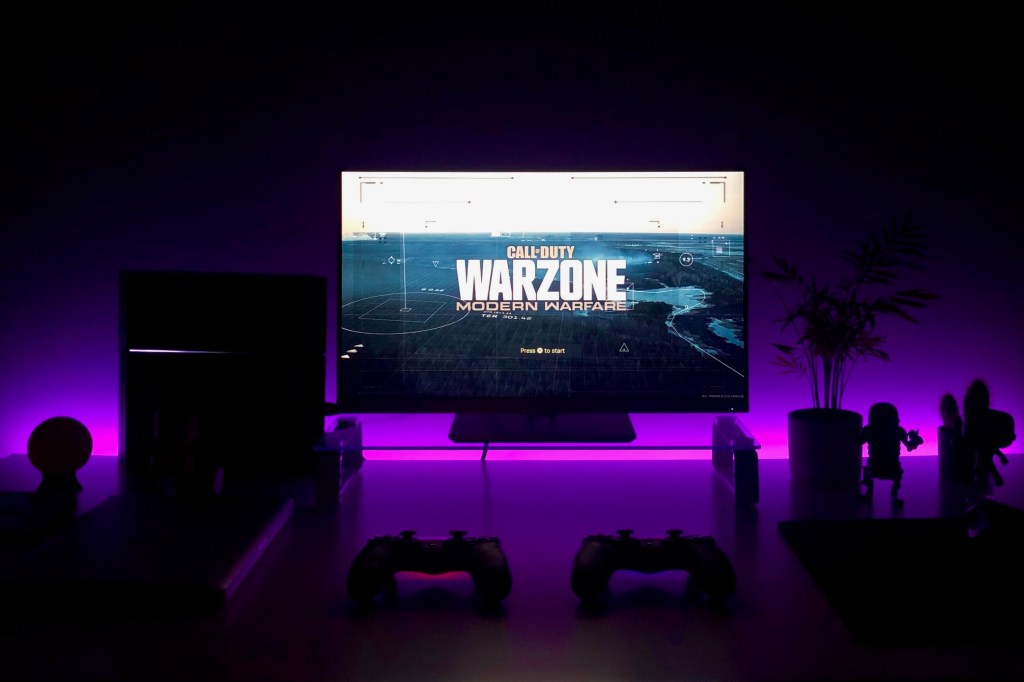ALLM and VRR: Auto Low Latency Mode and Variable Refresh Rate explained
These two bits of TV tech take gaming to fun new levels

Recently, two technologies that promise a significant experience upgrade for gamers have become commonplace on TVs: Auto Low Latency Mode (ALLM) and Variable Refresh Rate (VRR).
ALLM kicks in automatically when you start playing, reducing the time it takes for your actions to be reflected onscreen, while VRR is design to prevent ugly screen tearing.
Now console players have caught up, here’s how both technologies work – and how they improve your gaming experience.
What devices support ALLM and VRR?
ALLM and VRR are both part of the latest HDMI standard, HDMI 2.1. This has been around for a few years now, but TV manufacturers weren’t super-quick to support it, so older TVs might not have any compatible inputs. Most sets from 2021 onwards should have at least one port, but you’ll need to check your TV’s user manual to find out which ones.
Next-gen games consoles including the Sony PlayStation 5 and Microsoft Xbox Series X / Series S support both technologies. The older Xbox One X and Xbox One S also support VRR – but only between 40Hz and 60Hz. PCs with graphics cards released in the past few years will play nicely with VRR over HDMI.
How does ALLM and VRR work?

When you boot up a game on an ALLM-enabled device, it sends a flag to your TV to automatically switch to its game mode, which turns off most of the image processing functions – think motion smoothing, edge sharpening and dynamic contrast. These all add latency, or the time between you pressing a button on your controller and the action happening onscreen. Switching them off means there’s less delay, which makes each input feel more responsive.
VRR, meanwhile, lets your TV adjust its refresh rate (how often the panel updates its pixels each second) on the fly to match the currently running input, rather than staying locked at 60Hz or 120Hz. Games that usually ran at 60fps but sometimes drops frames – usually when the onscreen action gets hectic – would appear to stutter or show screen tearing on TVs without this tech. Screen tearing was very common during the PS3/Xbox 360 era, and could make for a frustrating experience – one that PC gamers didn’t have to worry about thanks to AMD Freesync and Nvidia G-Sync adaptive refresh rate functionality. Enabling VRR syncs the fresh rate, so these effects can’t be seen.
ALLM and VRR can enhance immersion by improving how responsive your game’s controls feel. You’ll benefit most in titles that require quick reflexes, such as first-person games.
Some words of warning
Gamers greatly benefit from low-latency settings, but ALLM isn’t suited for other types of TV or display viewing. The reason? Switching to low latency disables other settings and features, such as the TV’s more advanced image processing modes. Luckily, ALLM clicks off automatically when you’re no longer playing a game.
Gamers have also noted some problems regarding VRR. Namely, stuttering, flickering, and overall image quality issues have been reported. For example, there was recently a reported flickering issue with a PlayStation beta.
When problems with ALLM or VRR occur, you can try a few troubleshooting steps to resolve the issue. First, always ensure your TV or monitor uses the latest firmware. You should also try to adjust your TV’s VRR settings to see if that resolves the issue. It would also help if you tried using a different HDMI 2.1 port. Finally, if the problem gets out of hand, it might be wise to turn off ALLM and VRR and wait for a fix from the TV manufacturer.


